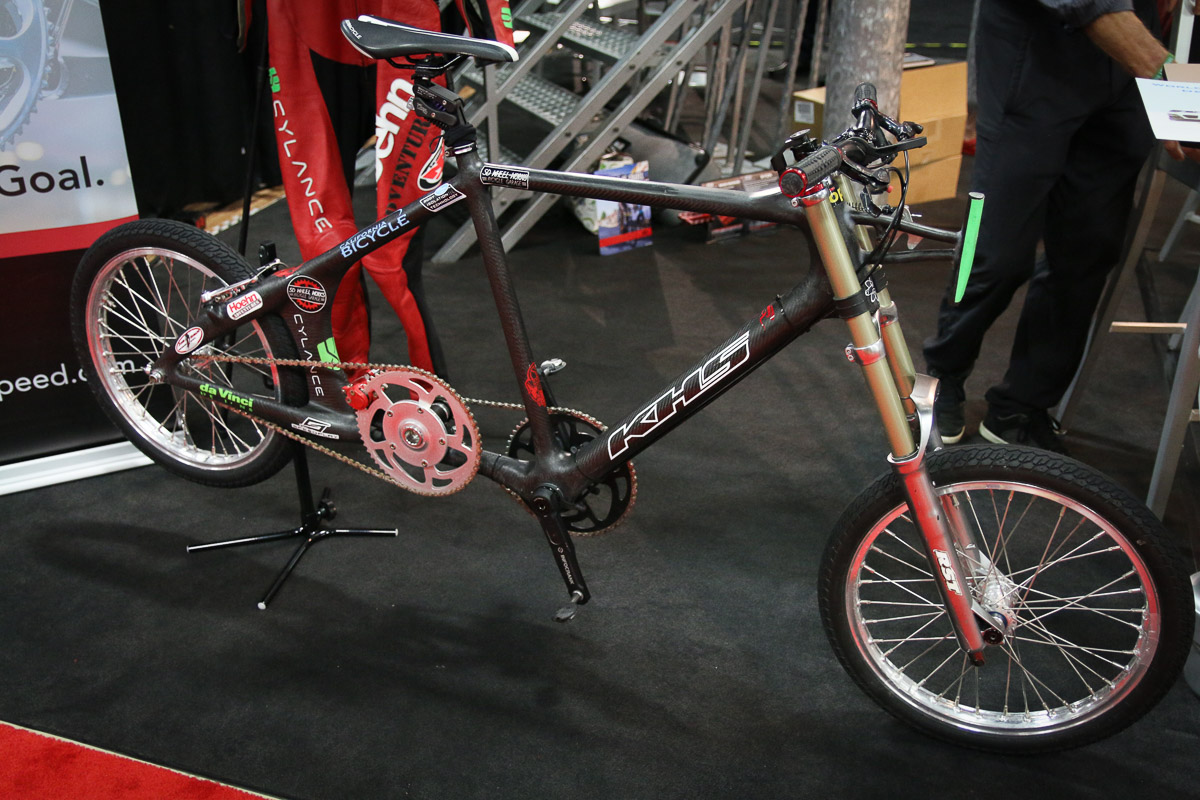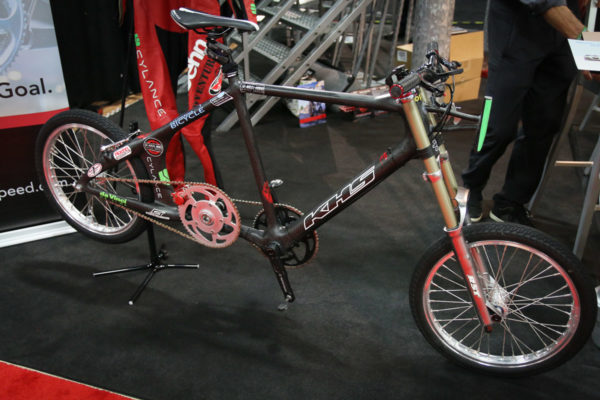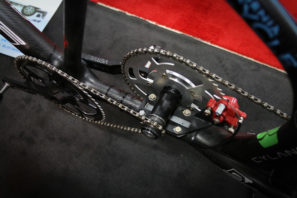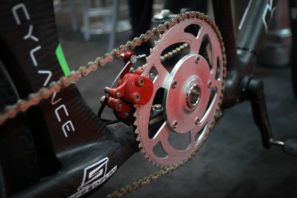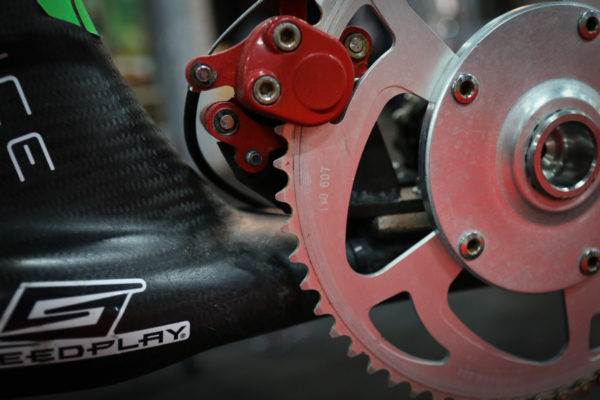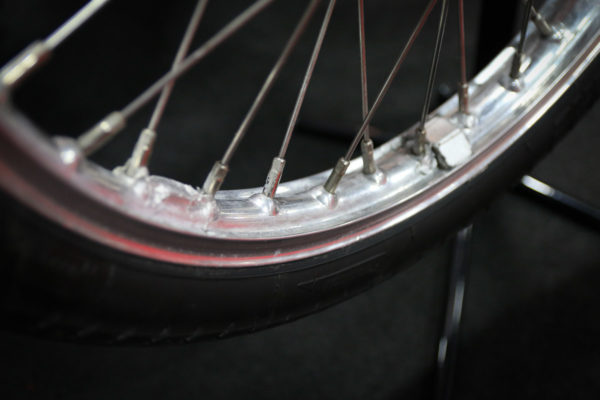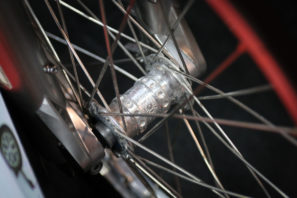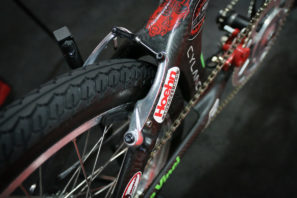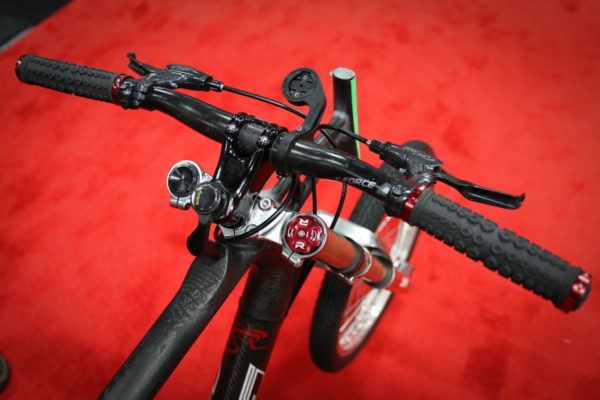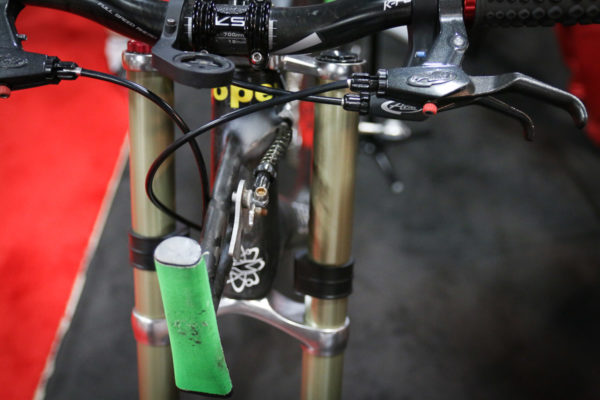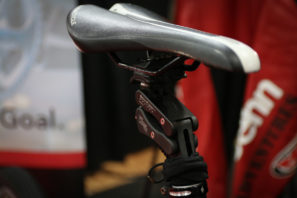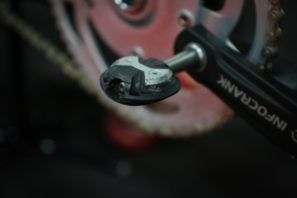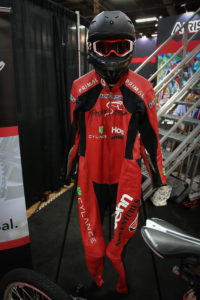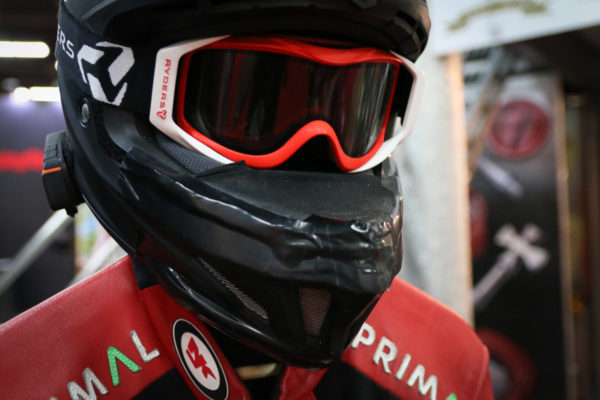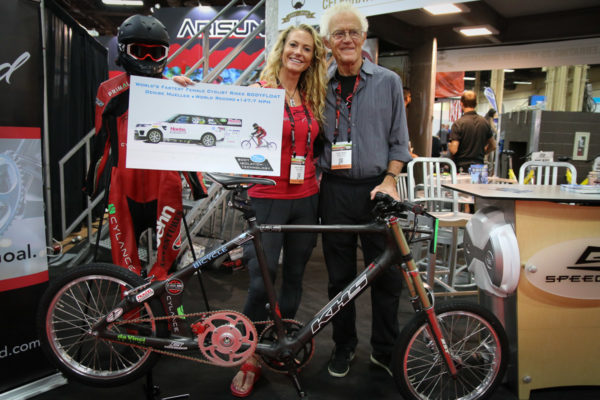
Interbike is always filled with a number of eye catching one-offs, but there was one bike roaming the show attracting more attention than the others. Along with that bike were two incredible competitors – the bike’s pilot Denise Mueller, and her coach and three time Olympian John Howard. A former Paced Bicycle Land Speed Record holder himself, John approached Denise with the goal of setting out to not only be the first woman to attempt the record, but to become the outright record holder. The conditions ended up preventing Denise from taking the top spot, but she did set the women’s record in the process at an incredible 147.7 mph, on a fixed gear, behind a Land Rover, on the Salt Flats.
When we spoke with Denise at Interbike she was already forming plans for the next attempt, and knows she has the speed…
The whole point of the Paced Bicycle Land Speed Record is to ride a bicycle behind a vehicle of some sort as fast as humanly possible. Originally that meant drafting a train, but modern times have given way to Land Rovers with custom built fairings. John Howard set the record in 1985 with a top speed of 152 mph riding behind a dragster, also at the Bonneville Salt Flats. The current overall record is held by Fred Rompleberg who set a top speed of 167 mph in 1995.
In order to attempt the record, Denise needed a bike so the KHS sponsored athlete had a custom frame built by Len Lochmiller in San Diego and the bike was built with help from SD Wheelworks – after all, you can’t just go to the bike shop and buy a bike capable of pedaling to 150 mph. The carbon frame features a longer wheel base for stability and is built around a dual crown fork with shortened travel to provide the stability needed for the front of the bike.
About that drivetrain – it’s a fixed gear. But apparently that’s not as terrifying as it sounds since slowing down at 150 mph simply means exiting the draft and letting the wind slow you down. Not to mention that the dual 60t chain rings and 425 gear inches of the double reduction gearing means the bike travels about 125 feet for every revolution of the crank. Braking was provided through a custom designed “Sprotor” with a disc brake caliper positioned to clamp directly to the middle sprocket which would slow the bike and the cranks. There was also a linear pull V-Brake for the rear wheel, but surprisingly for her next attempt the bike may not have any brakes at all. As crazy as it sounds to not have brakes on a bike that travels fast enough to get thrown in jail, she said they really weren’t necessary due to the gearing on the bike and the wind resistance once out of the draft.
A lot of people have asked about the wheel and tire size, and while some of it was down to making the bike with a lower center of gravity, Denise said most of it came down to tire selection. As you can imagine, standard bike tires simply won’t hold up to 150+ mph. That meant sourcing a tire that was speed rated but would also fit the parameters of the bike. These 17″ motorcycle tires were apparently the only ones that fit the bill, so custom 17″ wheels were built to match with motorcycle rims and Profile hubs. Special attention had to be paid to the balance of the wheels and tires for obvious reasons, and even the tires were carefully shaved down in the center section of the tread to provide a larger contact patch.
The cockpit of the bike also includes a number of custom touches including a Hopey steering damper to prevent speed wobbles. The green bar in front of the bike is part of the special tow hitch attachment which allows the bike to be towed up to 100 mph. At that point, the lower brake lever on the left side would be pulled and the bike would detach from the vehicle to travel under only Denise’s power. While the bike would release at 100 mph, Denise said it isn’t until 130 mph that the vortex really begins to pull. Ideally, if she needed to exit the vortex she would have to slow to 110 mph, but she did get spit out at 135 mph during practice which was scary, but she held it together. Apparently, one of the hardest parts of the speed record attempt is the communication and interaction of the rider and the driver to operate in sync. Too fast for the vehicle and Denise would get spit out the back. Too slow, and she would struggle to keep the proper distance from getting too close and not reach top speed. Fun fact, Denise pointed out that she had a Garmin along for the ride, but it was not capable of recording her top speeds and went to zero.
Additional details for the bike include a BodyFloat suspension seat post, Speedplay Zero Aero pedals, and a reversed Infocrank with the chainring on the left side.
At 147.7 mph, the required riding gear has different requirements at well. For her record attempts Denise had to pedal in lycra which she wore beneath a dual layer leather speed suit. Her helmet included a 2 way radio to communicate with pace car driver Shea Holbrook, and required a custom modification when they got to the salt. Denise laughed as she pointed out that it was essentially pantyhose taped to the chin bar of the helmet to keep out the salt that was swirling in the vortex behind the pace car.
When Denise set out to tackle the record, one of the main goals was to beat John’s time of 152 mph, which he was all too happy to help. The team had also hoped to best 167 mph, but after finally confirming that at least 155 mph was possible with her gearing and bike set up, rain on the last day kept the final speed at 147.7 mph. Will we see her back on the salt for another record attempt in 2017? That seems very likely, but it’s a massive undertaking and Denise said it would require a lot of things to come together including lining up another pace car. Apparently, there may be another bike already in the works and judging by the amount of attention that Denise, John, and her bike were attracting as they wheeled it through the halls of Interbike, we wouldn’t be surprised to be writing another story next year about her taking the overall record.
